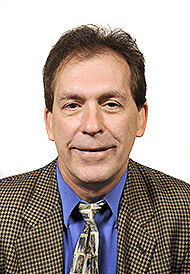Mr. Mike Kulak
Technical Consultant – Aerospace Structures
Mr Kulak graduated with a B.S. and M.S. in Civil Engineering from Carnegie Mellon University. He has been with Alcoa/Arconic for 33 years. He is currently a Technical Consultant in Aerospace Structures at the Arconic Technology Center (formerly Alcoa Technical Center) specializing in design and material trade-off studies supporting Arconic Aerospace flat rolled products, extrusions, and forgings. He is the structural lead for cooperative programs with various OEMs supporting the implementation of new Arconic materials and product forms in commercial aircraft structure. Mr Kulak is also leading the Arconic Fiber Metal Laminate programs and managing a Cooperative Research and Development Program with the FAA, aimed at building and testing advanced metallic fuselage concept panels.
Presentation
A Material Supplier’s Assessment of FML for Single Aisle Lower Wing Skins
In 2003 Arconic initiated a lower wing skin test program consisting of twenty-five different 5-stringer stiffened panels (762 mm wide and 2280 mm in length) representing thirteen different material and design concepts including Fiber Metal Laminate (FML) concepts (Heinimann, ICAF2007). Because of the exceptional performance of the FML concepts, Arconic has continued to pursue FML technology for improving lower wing performance. These FML concepts, aimed at improving damage tolerance, residual strength and static strength, range from reinforcing monolithic skins with FML bonded straps to full FML skins using thicker 2x24 sheet gages ranging from 0.8 mm-1.6 mm. The goal for this presentation will be to review the motivation for this work and identify technology gaps that need further work. The first half of the presentation will describe the details of an internal study assessing the potential of FML lower wing skins for a single aisle aircraft. The FML architectures considered in the trade study will be described as well as Arconic test data used as inputs. Previous data on large test panels with skin cracks under broken stiffeners indicated curved crack fronts in monolithic skins and uneven crack growth through the thickness of FML skins due to the broken stiffener bending load. Results of crack growth analyses using Arconic FML software tools will compared to the measured large panel crack data. The second half of the presentation will focus on lessons learned in the manufacturing of complex double curved wing panels. Implications for manufacturing technology readiness, automation, and industrialization will be discussed.

